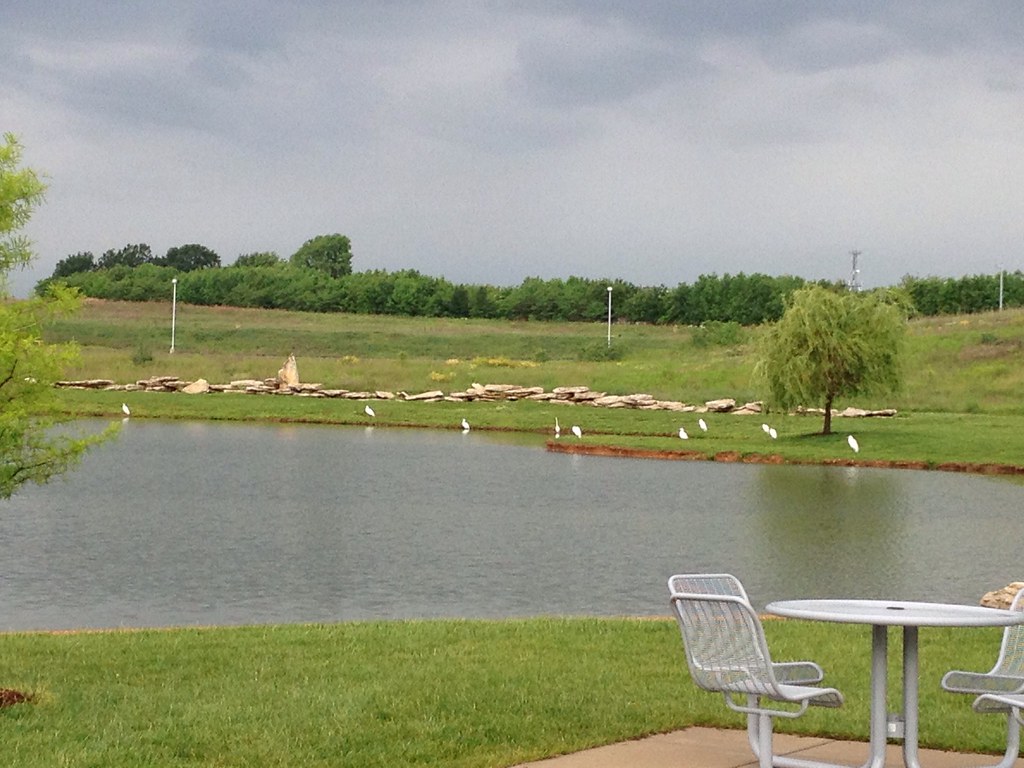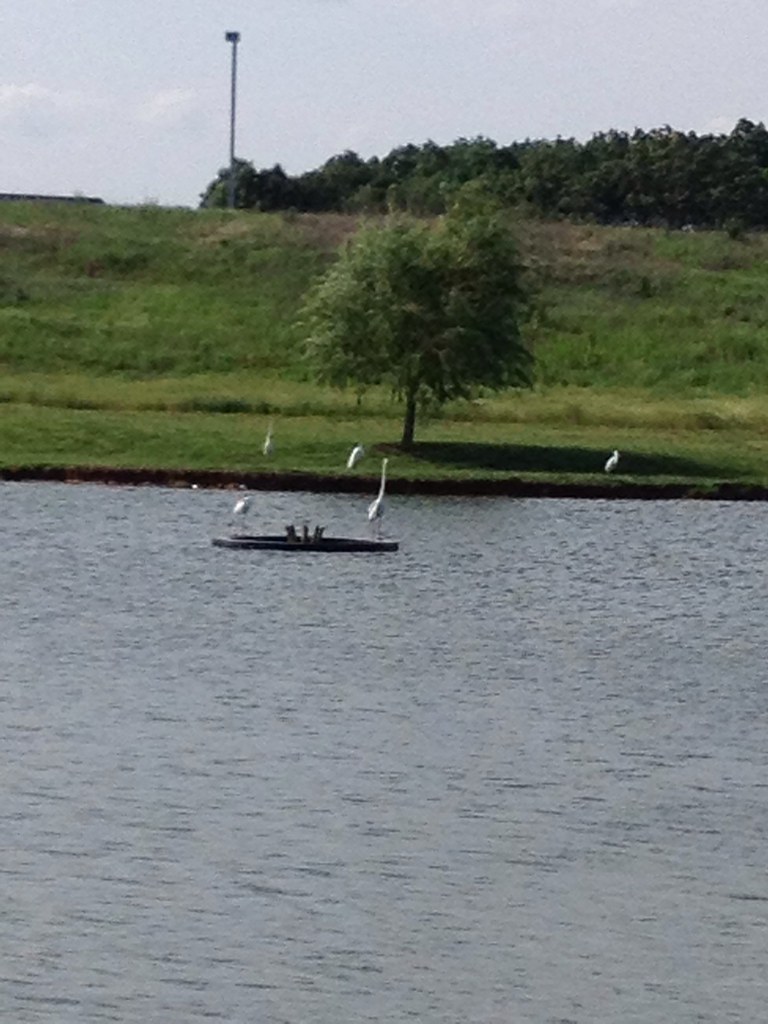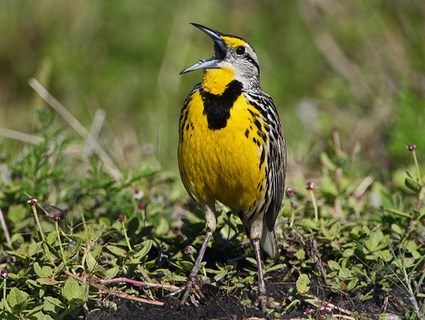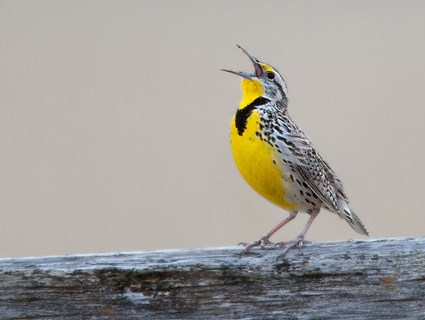I have been waiting all day to have a chance to tell you about the bird I saw today. I actually saw this same bird a few days ago, but I had unfortunately left my binoculars at home and by the time I noticed the bird he had flown away. So I was extremely happy to have the chance to see him again today.
It happened when I was taking a break around 3:00 pm. I was taking a little stroll around the lake outside the bookstore (my usual bird siting area) and enjoying the beautiful, sunny weather. After a few minutes with my binoculars in hand and no birds around I started to get disappointed and realized I should go inside and get back to work. Just when I was approaching the doorway, I heard a squirrelly chirping noise and lo and behold we had a bird visitor!
As soon as I saw the way the bird was hovering about 30-50 feet over the water I knew exactly what he was going to do next (because I had seen a bird like him do it before). I got out my binoculars and watched as he abruptly dove head first into the water and came flying out with a bright orange fish hanging from his beak. How cool!
After he caught the fish, the bird flew over to the rocks across the lake and sat on top proudly holding his goldfish. He seemed very pleased with himself. Once he was perched on the rock it was easier for me to get a good look at him through my binoculars. He had a beautiful bluish head and back, and white throat and underparts. The feathers were kind of iridescent and purplish and they contrasted so beautifully with the bright white collar around his neck. He had an interesting shape, too. He was very tiny but he had a pretty large head with a shaggy crest. He was stocky with a fairly long beak and a short tail. What a pretty bird!
I went inside and immediately began searching through id pictures for my latest visitor. He was blue, but not a blue-jay. He resembled a tree swallow, but he didn’t have the long tail and tree swallows don’t eat fish! Wait a minute---FISH! He’s a Kingfisher!
A Belted Kingfisher to be exact. Turns out Belted Kingfishers are one of few bird species in which the female is more brightly colored than the male. (This is known as reverse sexual dimorphism.) There are 93 different species of kingfishers but the Belted Kingfisher is the only member of that group commonly found in the US and Canada. I had no idea this bird lived anywhere NEAR us here in the Midwest. He looked almost tropical or exotic!

The Kingfisher I saw was most likely a male because he was lacking the reddish feathers on his chest. He did have the dagger-like bill and the crest on top of his head though. He was stocky and stout and overall CUTE. When identifying this bird, however, the dead-giveaway was his behavior. It is described as an ‘aerial dive’ type of feeding. These birds are pros at it. They watch the water from a perch or while hovering and plunge into the water headfirst in order to catch prey in their bill. This is exactly what I saw my bird do with the goldfish. In addition to fish they eat amphibians, insects, small mammals and reptiles.
The bird’s call is described as a “loud rattling cry” or a “heavy fishing reel” but I think it sounded more like a squirrel or a louder version of hummingbird chatter. If it weren’t for this loud call I probably would have missed the bird completely so it’s a good thing they are so vocal.
The Kingfishers nest in burrows and banks near lakes, rivers and ponds. Human activity such as digging gravel pits and building roads has actually expanded the breeding range for Belted Kingfishers because it has created banks where they can build nests.
Thanks to this bird visitor we can add "Belted Kingfisher" to the list of birds spotted on SCC Campus. I really hope this guy becomes a frequent flier at our school!












































